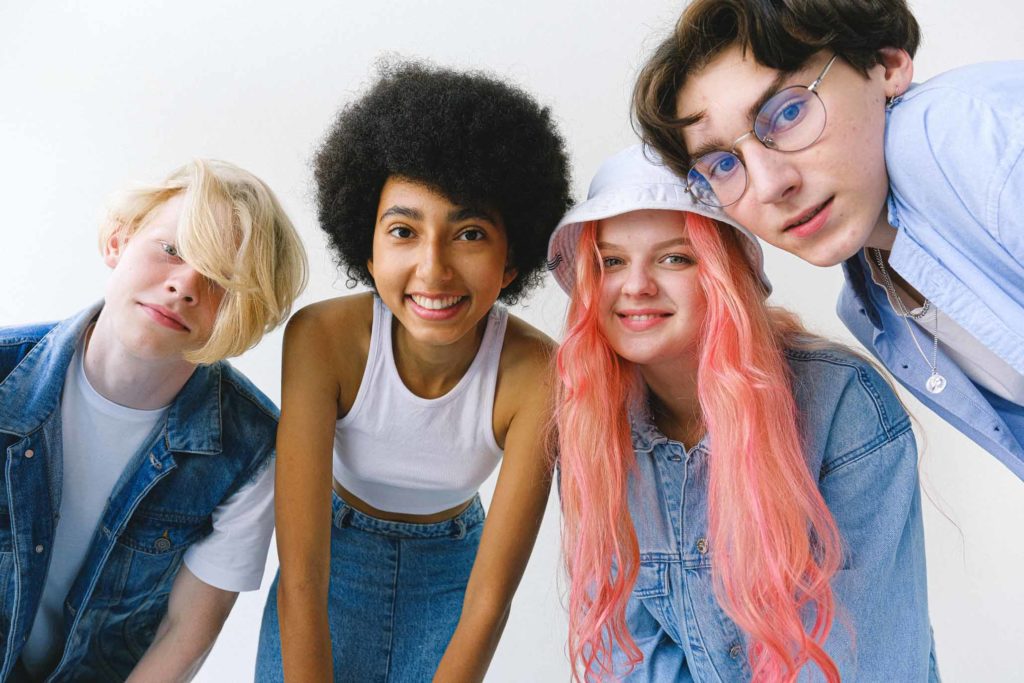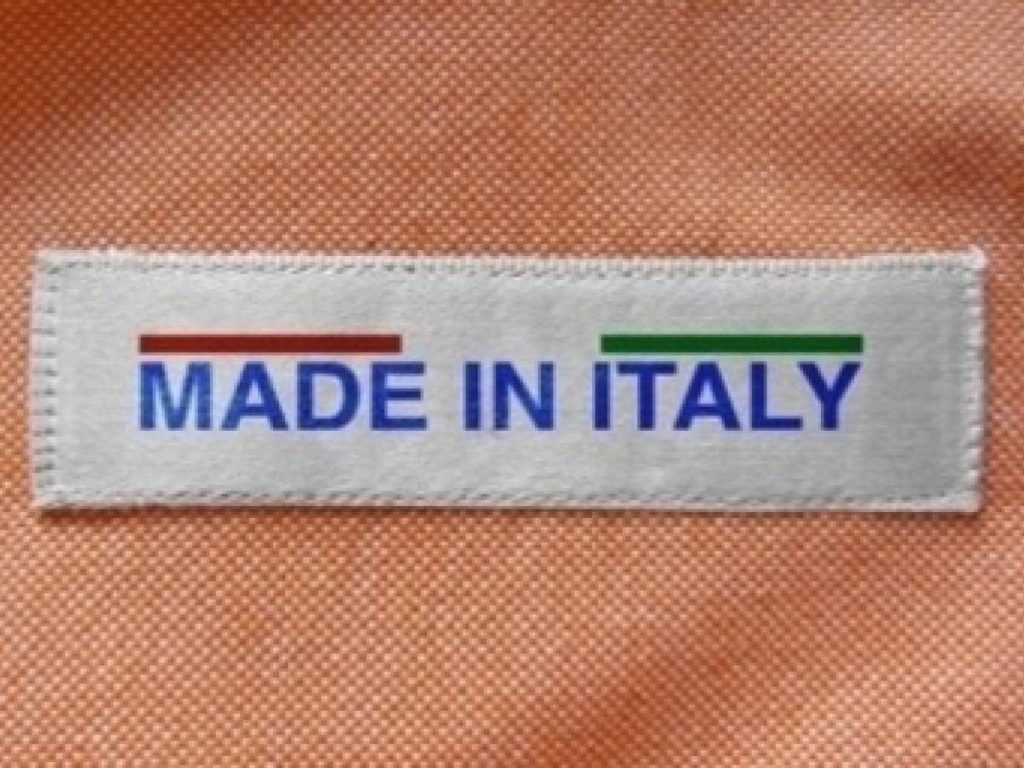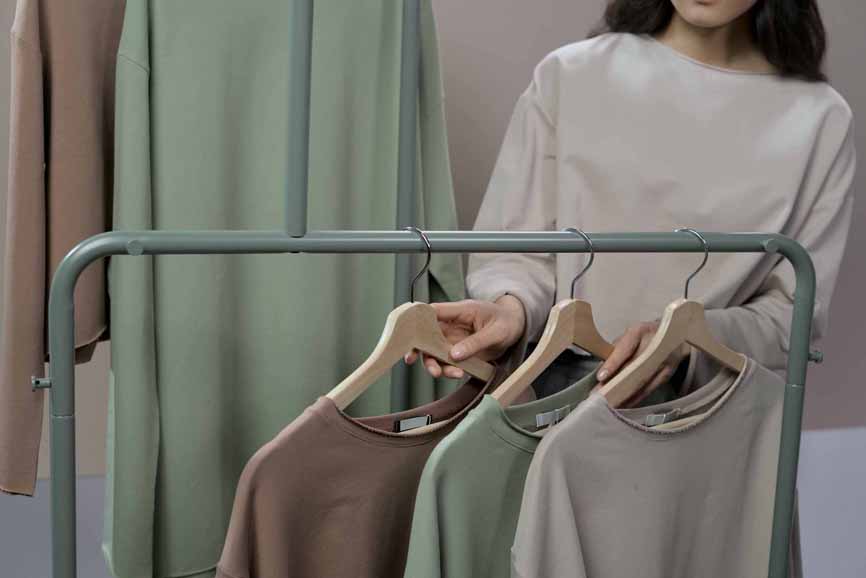There are many researches that investigate the purchasing behavior of consumers. Usually, what emerges is the greater sensitivity of Gen Z towards sustainability issues. This sensitivity, however, does not always have a coherent practical implication. Let’s see why.
According to the research The Future of Retail Store and Customer Engagement in the New Normal, the key factors that will guide purchases in the near future are the people well-being, attention to the supply chain and value for money and, above all, a new way to understand sustainability.
The survey was carried out between January and February of this year by the students of MAFED – the Master in Fashion, Experience & Design Management of SDA Bocconi University – and involves a sample of 560 consumers of all age living in different regions of Europe.
The data highlights multiple trends, including the transition from a Business to Business (B2B) market to a Human to Human (H2H) market, the gradual loss of value of the “Made in”, a boom of the second hand and so on.
From sales assistants to influencers
It is widely believed that sales assistants will become real influencers, which is a sign to monitor for companies that want to keep up and that may have to train their employees on these themes.
The signal is well connected to the phenomenon that has been popular in China for some years, i.e. the live-streaming e-commerce, a mode of live sales mixed with entertainment in which influencers engage their followers with offers often limited in time. Needless to say, the protagonists of this phenomenon are the members of Gen Z and Gen Y.
The crisis of “Made in”
As for the “Made in” crisis, research indicates that for younger people this term would no longer be enough. So, if in the not-so-sistant past it was sufficient to read “Made in Italy” to feel confortable, now the bar has risen and Gen Z is asking for more details on transparency and traceability of the supply chain. For the very young, in other words, a “Made in China” product can be perceived of greater value if it shows information on its traceability compared to a “Made in Italy” product of which nothing else is known.

Gen Z and the second hand boom
A trend that emerges from Bocconi’s research concerns, as we’ve seen, the pre-owned phenomenon, which once again sees the new generations at the forefront.
The survey shows that 69% of consumers are willing to pay a premium price to buy brand-verified second-hand clothes, thus contributing to the circular economy.
Erica Corbellini, lecturer in Fashion & Luxury Management at the SDA Bocconi School of Management, says: “The phenomenon of pre-owned, which could be perceived as a threat, actually allows fashion brands to extend the life cycle of products, contribute to the circular economy and make certain products more accessible also to new categories of consumers”. An excellent example of this is Kering’s decision to buy a stake in Vestiaire Collective – the leading platform in the second-hand sector – because it confirms that the fashion future will also pass through second-hand.
According to François-Henri Pinault, President and CEO of Kering, “second-hand luxury is now a reality with solid roots, especially among younger consumers”.
Grégory Boutté, Kering’s Chief Client and Digital Officer, adds: “Our innovative strategy aims to invest in the brands and technologies of the next generation of consumers, through cutting-edge business models that allow us to serve our customers even better and to improve our performance. Investing in Vestiaire Collective is absolutely consistent with all of this”.
New consumptions habits
On the pre-owned phenomenon, we mention another research published by Thred UP – the online second-hand delivery store – entitled 2021 Resale Report. It turns out, among other things, that the new generations are fueling the rise of the second hand. Gen Z and GenY women are tied for first with 46%, followed with 38% by Gen X women and Baby Boomers women with 20%.
The same report highlights how Gen Z has developed a completely new mindset on clothing consumption. For example, younger people are 165% more likely than Baby Boomers to consider the resale value of clothes before proceeding with the purchase and 83% more likely to agree that ownership of clothing is temporary. They are also have 33% better chance of reselling purchased clothes.
All these data are consistent with the overall picture supplied by a recent Bloomberg article, entitled Gen Z’s Used Clothing Hacks Won’t Save the Earth. The article highlights how Gen Z has contributed to the rise of apparel retail platforms such as Vinted and Depop and rental apps such as Hurr and By Rotation.
If the second hand phenomenon is a way to reduce waste and extend the clothes life, the do-it-yourself revaluation of garments is another story. There are many video tutorials disseminated on social networks in which young influencers dispense practical advice on how to give new life to clothes. Hashtags like #knitting and #thrifthaul make millions of views on Tik Tok – a trend born of the pandemic that has revived manual crafts such as knitting and crochet and DIY in general.


Gen Z and sustainability: is it true love?
Studies, researches and articles agree in representing the youngest as the driving force of a sustainable revolution. But is it really so? In this case, why does the hashtag #Sheinhaul have 2.3 billion views on Tik Tok while hashtags like #knitting and #thrifthaul have significantly less?
Shein is the ultra-cheap and ultra-fast fashion store, Shein Haul is the practice that consists in showing (and promoting) the Shein branded clothes through videos or photos on social media. Furthermore, the Shein shopping app is the most downloaded in the US and the major clients of the brand belong to Gen Z.
There’re different reasons behind this contradiction. The first one probably comes from the pressure of the Internet: a world that is craving for ever new content (and clothing), in other words, doesn’t help sustainable consumption, especially by boys and girls born in the digital age.
“Fast fashion and social media are reflected in the way they provide dopamine and instant gratification”, explains fashion psychologist Shakaila Forbes-Bell. “More sustainable fashion practices such as slow fashion contrast with all that social media really is, namely speed, novelty, brilliance”.
Fashion for rent
It must be said that many members of Gen Z have not their own salary and it’s therefore more difficult for them to buy sustainable clothes that are dearer, usually.
“We live in a historical moment in which productions are gradually converting into sustainable productions”, highlights Francesca Rulli, creator of the certification system and mark for sustainable fashion 4sustainability. “Product traceability, sustainable chemistry, the attention to people and their rights, their safety and well-being, a more rational use of water and energy, the reduction of emissions into the atmosphere … For sure all this makes the sustainable product more expensive, because its value is higher as well. Consumers, especially younger ones, are starting to ask these questions, which predisposes them to more informed choices or to alternatives such as reuse or rental”.
The trend is to buy less but well – which means having less full wardrobes, where to store better quality and therefore more durable garments and accessories – or opting for the so-called “fashion renting”. A study by Washington State University has shown that Gen Z is the most oriented to garment rental, with 55% of the sample having already experienced it precisely because of a greater attention to less impacting and more responsible consumption behaviors.
The Altagamma Consumer Insight, published last June, highlighted the same trend: Millennials and Gen Z are driving the growth of the luxury industry, they will represent 60% of customers in 2025 and will be the pioneers of renting. 21% of them are inclined to this kind of service, against 9% of the other generations. According to Allied Market Research, the rental fashion business will reach a value of more than $ 1.9 billion by 2023.
The rental of clothes is the opposite of fast fashion and represents a perfect solution for those who dream of a large wardrobe that doesn’t feed waste and pollution.
A confirmation in this sense comes from the United States, where according to a study published by Rent the runway, one of the most popular clothing rental services, active since 2010, its business has so far avoided the production of about 1.3 million new items. According to the same study, renting a suit instead of buying it allows you to consume 24% less water, reduce energy consumption by 6% and reduce CO2 emissions by 3%.

Concept by Process Factory/4sustainability®

